Estimated reading time: 3 minutes
Have you heard of fruit thinning before? Mid-spring is the time to start thinking about the “why” and “how” of fruit thinning.
In fact, it’s one of the all-important 10 steps to ultimate fruit tree care.
Related Articles
Nine good reasons to grow cherries
Here are 9 great reasons why you should grow a cherry tree in your garden, despite their reputation as being hard to grow.
Fourteen varieties of apricot trees: pros and cons
Apricot trees are loved by many people. But what are the pros and cons, and how do you choose one variety over another?
How to grow apples — the organic way
Apples are one of the most popular fruits to grow in your backyard. Learn the basics of how to look after your apple tree.
The technique is simple – it just involves removing some of the fruit from your trees, by hand. It’s one of the simplest jobs you can do each year on your fruit trees to help get regular crops. So why do so few people do it?
Even if you’ve heard of it, you might not really understand it. One of the least understood reasons for doing this job is to try to break the cycle of biennial bearing that many fruit trees naturally adopt.
But also, pulling the fruit off your tree just feels wrong, right? We’ve found the best way to overcome this natural feeling of wanting to protect every piece of fruit is to understand the reasons for doing it.
How much fruit is too much?
Here’s a typical bunch of plums on a tree as they naturally set. As you can see, there are LOTS of plums in these two bunches at the end of a small branch.
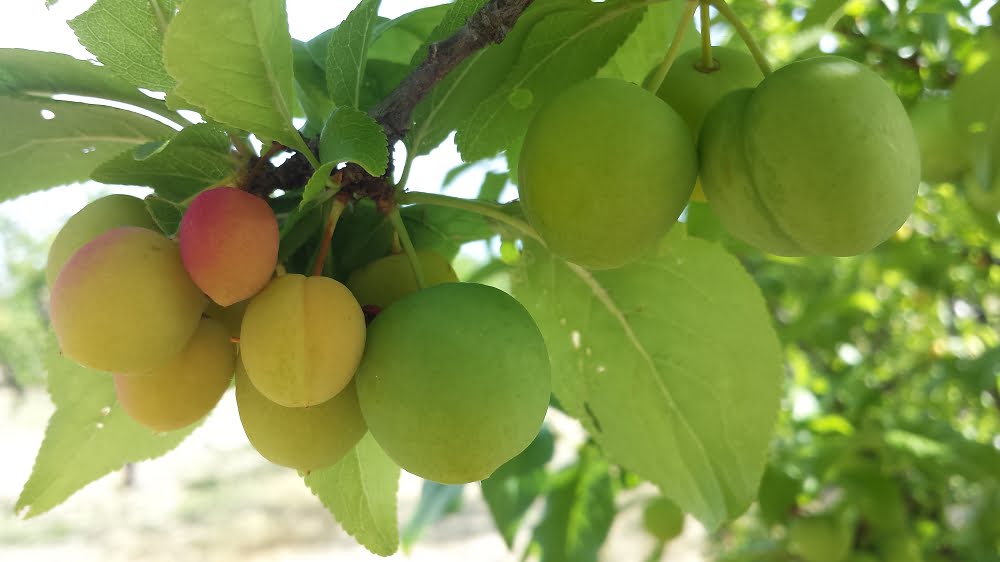
If you’re seeing the same tight bunches all over the tree, this is what we’d call a “heavy” crop.
Having a heavy crop signals to the tree that it should take a rest next year, or in other words, have a “light” crop.

If you remove all but two of the plums (leaving jus one in each bunch), you’re sending the tree a signal that it’s having a light crop this year, which will encourage it to have a heavy crop again next year.
Can thinning remove too much fruit?
If you follow these photos, it looks like you’ve pulled a lot of fruit off, doesn’t it?
The good news is that if you do this job early enough in the season, you’ll be sacrificing very little actual fruit volume. The tree will put the same amount of energy into the fruit you leave on the tree as it would have to the big bunches of fruit.
Result? The same weight of fruit, in fewer pieces = bigger fruit.
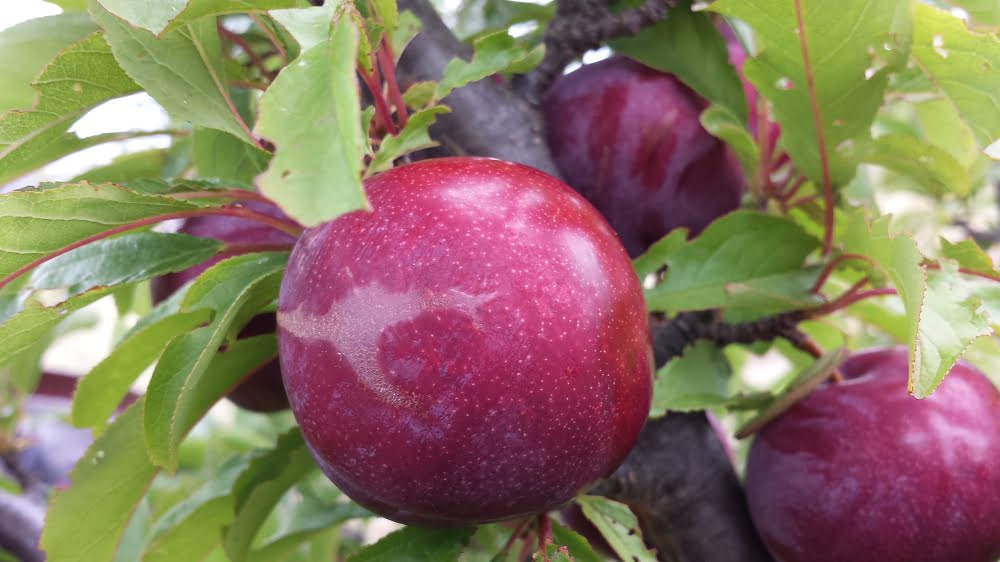
Managing the crop is one of your main jobs as the caretaker of your fruit tree. There are also several other excellent reasons for thinning as well, including:
- protecting the structure of the tree
- growing more fruit of a size that is usable
- protecting your fruit from pests and diseases.
Knowing how much fruit to remove is the tricky bit. It’s one of the main things that stops people from doing this job properly (or doing it at all).
And the good news?
Once you’ve experienced how much better your crop is after thinning, you’ll never go back. So assess how much fruit your tree has, and get started with thinning!
Related Articles
Nine good reasons to grow cherries
Here are 9 great reasons why you should grow a cherry tree in your garden, despite their reputation as being hard to grow.
Fourteen varieties of apricot trees: pros and cons
Apricot trees are loved by many people. But what are the pros and cons, and how do you choose one variety over another?
How to grow apples — the organic way
Apples are one of the most popular fruits to grow in your backyard. Learn the basics of how to look after your apple tree.

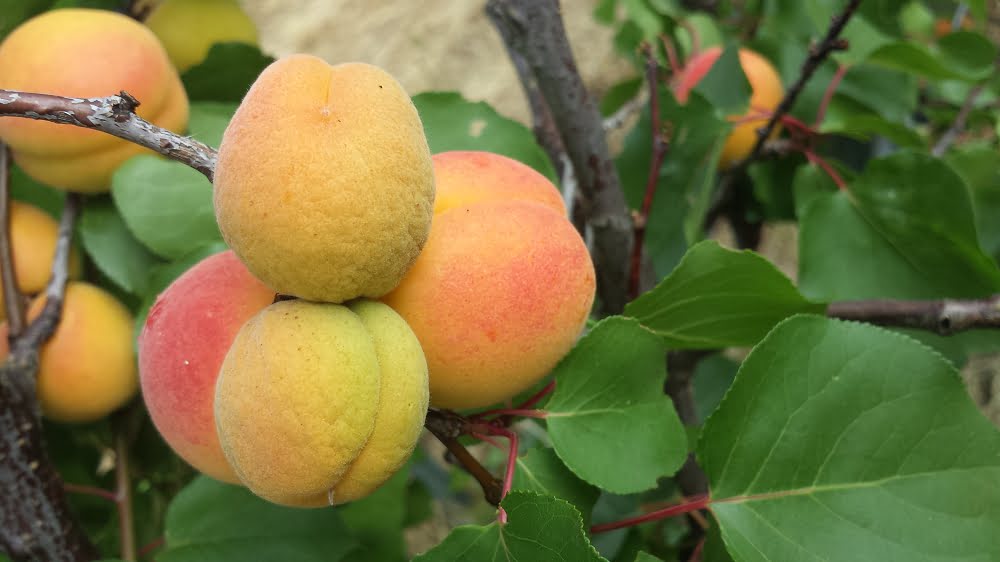
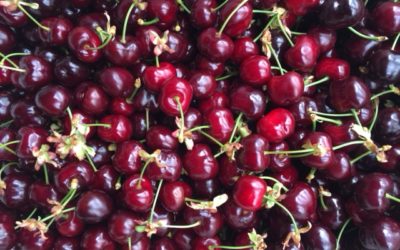

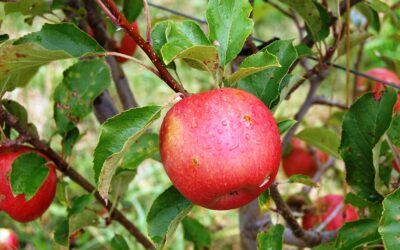
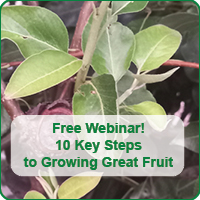

Do you have drip irrigation pipes laid under or over mulch and why ?
Thank you
Our irrigation pipes are above ground either draped low through the trees or clipped to a wire (although we don’t use mulch). This way it’s easy to walk along the row and see which drippers may be blocked. You could also put the pipe underground and just come up at each tree, but this is more work and not practical on a large scale.
I had a few Curley leaves on our peach tree, I have taken those off and left them in a plastic bag to be killed by the sun. There is fruit forming on the trees have I missed the opportunity to spray for curly leave.
Hi Gayle – yes, you have, sorry. There’s only one chance to spray for this disease each year, and that’s at budswell (which is different for every variety, by the way – so you need to monitor your trees closely in early spring to get the spray on at the right time). But don’t worry, as soon as the weather warms up the tree should grow out of it.
Hi, my peaches and nectarines have been devastated by curly/bubbled leaf disease. Have sprayed but to no avail, we live next door to cauliflower/cabbage farms, not organic and my neighbours peach tree was infected last year and this year all over completely. Am saddened by immeasurable loss of fruit as it was awash with flowers spring and last year had bumper crops from all including apricots. We did have a massive amount of insects at the beginning of this season and that was almost fixed by having over a hundred sticky yellows obviously the farms pests migrated to my backyard! We’re here at Werribee Sth coastal village and it is perfect area for stone fruit except for this year. Sad.
Hey Alis, so sad to lose fruit. The Leaf curl is preventable by spraying (so probably nothing to do with your neighbours) – but the key is you have to get the timing exactly right (and it’s different for different varieties), and you only get one chance to prevent it each year. Have a look at our blog about Leaf curl here – https://growgreatfruit.com/how-to-prevent-leaf-curl/
Thank you
On young fruit trees at what age do you stop removing flower buds and allow to go to fruit?
Usually we wait until the tree is out of the establishment phase (so, after the first couple of years and when we have achieved our desired scaffold shape for that tree). But, it can depend on the type of tree, age when planted etc. You might find our short course on pruning young fruit trees useful as a guide! Thanks, Meg – Grow Great Fruit team.
Hmm.. two trees now 4 years old and still no fruit., apricots
Had a friend with two trees in coastal Vic that we’re never pruned or sprayed .. and they were loaded with fruit every year., I am baffled by This!
Hi Robbie, Have you checked out our other recent blog on things that can go wrong with apricots? It might be a good start to help you understand what could be going wrong. Thanks, Meg – Grow Great Fruit team.
Are you able to include a photo of what the stone fruit tree should look like when it is at the stage where we should spray for leaf curl? I sprayed my fruit salad tree when I thought was the right time but it is covered in leaf curl. Newby fruit tree grower here!
Hi Fiona, hopefully some of the pictures over in this blog on leaf curl are what you’re after! Also, it’s been a pretty tough year for leaf curl because of rainfall, so you might have got the timing close enough but sometimes you can still have leaf curl problems. If it’s a young tree and manageable size, we recommend pinching the infected leaves off, and new shoots will grow! Good luck, Meg – Grow Great Fruit team.